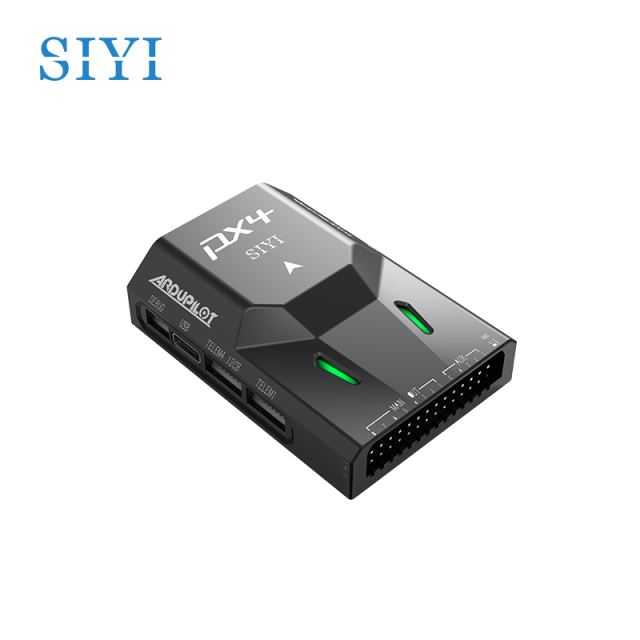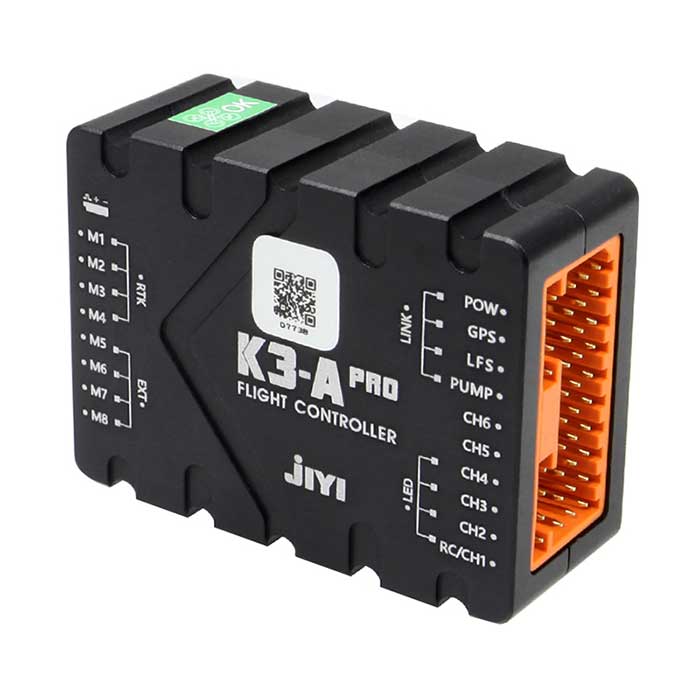The Potential of UAVs: SparkNavi Drone Flight Controller and GNSS/INS Made in Taiwan
The Potential of UAVs: SparkNavi Drone Flight Controller and GNSS/INS Made in Taiwan
Blog Article
The Significance of Drone Flight Controllers in Modern Aerial Technology: Key Components and Their Influence
In the realm of modern-day airborne innovation, drone flight controllers serve as the crucial systems that orchestrate a drone's performance and capacities. As industries progressively count on drones for applications ranging from agriculture to monitoring, the evolving modern technology within flight controllers elevates crucial concerns about their future effect and possible improvements.

Introduction of Drone Trip Controllers
In the realm of aerial innovation, drone trip controllers work as the essential brain of unmanned airborne vehicles (UAVs), allowing specific ability to move and stability during trip. These innovative systems incorporate sensor information, processing algorithms, and control inputs, allowing drones to implement intricate flight patterns with accuracy.
Drone trip controllers use different sensing units, such as gyroscopes, accelerometers, and GPS components, to assess the UAV's orientation and setting in real-time. This details is crucial for keeping balance and guaranteeing risk-free procedure in varied ecological problems. The controllers procedure this information to make rapid changes to the drone's motors, enabling smooth changes and responsive handling.
Furthermore, trip controllers are geared up with sophisticated software application that supports attributes such as waypoint navigating, challenge avoidance, and self-governing flight abilities. This software application is important for both industrial and recreational applications, where integrity and accuracy are vital. As drone innovation remains to advancement, the evolution of trip controllers will certainly play a crucial function in boosting UAV security, adaptability, and capability, ultimately increasing their applications across various industries.
Secret Parts Explained
Understanding the basic elements of drone flight controllers is essential for comprehending how these systems run successfully. At the heart of a flight controller is the microcontroller, which functions as the mind, refining data from different sensing units and performing commands. Vital sensing units consist of accelerometers and gyroscopes, which determine the drone's positioning and motion, giving essential comments for stabilization.
Another secret part is the barometer, which determines altitude by gauging air pressure, while general practitioner modules use positional data, allowing autonomous navigation - SparkNavi drone flight controller and GNSS/INS made in taiwan. The trip controller likewise interfaces with Digital Speed Controllers (ESCs), which control the speed of the drone's motors based upon the controller's commands
Communication components, such as radio receivers, facilitate push-button control input, permitting drivers to send commands in real-time. In addition, some trip controllers incorporate software program that can handle intricate formulas for waypoint navigation, trip planning, and telemetry information analysis.
Function in Trip Stability
Central to maintaining flight stability, drone trip controllers use advanced formulas to process sensing unit data and make real-time changes. These controllers are outfitted with a selection of sensors, including accelerometers, barometers, and gyroscopes, which continuously monitor the drone's speed, alignment, and altitude. By translating this information, the flight controller can identify discrepancies from the preferred trip course and react promptly to keep stability.
As an example, if a drone experiences an unanticipated gust of wind, the trip controller can promptly change the electric motor rates to combat Recommended Reading the disruption, ensuring a steady trip trajectory. This capacity is important not only for manual trip operations however additionally for performing complicated maneuvers and maintaining smooth flight in different ecological conditions.
.jpg)
In addition, the innovative algorithms utilized in trip controllers, such as PID (Proportional-Integral-Derivative) control, enable fine-tuning of the drone's feedback to modifications in trip problems. By enhancing these control specifications, flight controllers can enhance security, enhance responsiveness, and reduce pilot work. Eventually, the duty of flight controllers in making sure flight stability is essential for the efficient and secure operation of modern drones throughout varied applications.
Influence On Autonomous Procedures

Self-governing operations are especially critical in varied applications such as delivery, security, and agriculture solutions. With enhanced flight controllers, drones can autonomously browse fixed paths, successfully gather data, and adapt to vibrant environments. This visit their website capacity decreases the requirement for continuous human oversight, thus enhancing operational effectiveness and safety and security.
Furthermore, the execution of artificial intelligence methods within trip controllers enables drones to enhance their efficiency with time by learning from previous objectives. This versatility paves the way for much more sophisticated self-governing applications, such as throng modern technology, where numerous drones collaborate their actions to achieve a common purpose.
Future Trends in Flight Controllers
Technologies in trip controller technology are poised to revolutionize drone abilities in the coming years. One considerable pattern is the combination of expert system (AI) and artificial intelligence formulas, making it possible for drones to pick up from their settings and make real-time choices. This innovation will boost independent navigating, challenge evasion, and objective planning, significantly improving functional performance and security.
Additionally, the advancement of advanced sensing unit modern technologies, such as LiDAR and multispectral imaging, will certainly offer flight controllers with Continue richer information inputs. This will certainly help with a lot more sophisticated logical capacities, enabling drones to conduct complex jobs, such as precision search, agriculture and rescue, and infrastructure examinations with extraordinary accuracy.
An additional arising trend is the miniaturization of trip controller elements, which will cause lighter and much more portable drones. This development will expand flight periods and payload abilities, making drones a lot more versatile for numerous applications.
Final Thought
Finally, drone trip controllers serve as vital parts in modern aerial innovation, making sure security and precision in maneuverability with the combination of microcontrollers, accelerometers, and GPS modules. SparkNavi drone flight controller and GNSS/INS made in taiwan. Their ability to enable autonomous operations and adapt to various applications highlights their importance across numerous sectors. As innovations in fabricated knowledge and sensing unit innovation remain to emerge, the possibility for boosted abilities and improved operational performance in drone systems will likely improve the future of aerial applications
Central to maintaining trip stability, drone trip controllers make use of advanced formulas to refine sensing unit information and make real-time adjustments. By analyzing this data, the flight controller can recognize inconsistencies from the preferred flight path and react without delay to preserve stability.
Additionally, the innovative algorithms utilized in flight controllers, such as PID (Proportional-Integral-Derivative) control, enable for fine-tuning of the drone's reaction to adjustments in trip problems. Inevitably, the role of flight controllers in guaranteeing trip stability is essential for the efficient and secure operation of modern-day drones across varied applications.
The advancements in drone flight controllers not just enhance trip stability however additionally substantially affect self-governing procedures. SparkNavi drone flight controller and GNSS/INS made in taiwan.
Report this page